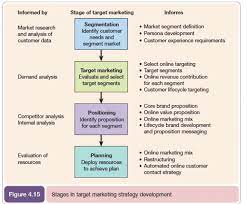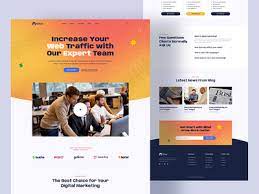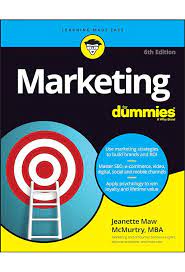Target Marketing Strategies: Reaching the Right Audience
In today’s fast-paced business world, effective marketing is essential for success. However, with so many marketing options available, it can be challenging to know where to start. One of the most effective ways to ensure your marketing efforts are successful is by using target marketing strategies.
Target marketing involves identifying and reaching out to a specific group of customers who are most likely to be interested in your product or service. By focusing on this group, you can tailor your marketing message to their needs and preferences, resulting in higher engagement and conversion rates.
Here are some target marketing strategies that can help you reach the right audience:
Define Your Target Audience
The first step in any target marketing strategy is defining your target audience. This involves identifying the characteristics of your ideal customer, such as age, gender, location, income level, interests and behaviours. Once you have a clear picture of who your ideal customer is, you can tailor your marketing message accordingly.
Use Social Media Advertising
Social media platforms such as Facebook and Twitter offer powerful advertising tools that allow you to target specific groups of people based on their interests and behaviours. This means that you can create ads that are tailored to the needs and preferences of your target audience.
Personalise Your Marketing Message
Personalisation is key when it comes to target marketing strategies. By creating personalised content that speaks directly to your target audience’s needs and preferences, you can increase engagement and conversion rates.
Use Email Marketing
Email marketing is a highly effective way to reach out to your target audience directly. By segmenting your email list based on demographic data or behaviour, you can create targeted campaigns that speak directly to each group’s interests and needs.
Analyse Your Results
Finally, it’s essential to analyse the results of your target marketing campaigns regularly. This allows you to see what’s working well and what could be improved, so you can adjust your marketing message accordingly.
In conclusion, target marketing strategies are an effective way to reach the right audience and increase engagement and conversion rates. By defining your target audience, using social media advertising, personalising your marketing message, using email marketing and analysing your results, you can create successful marketing campaigns that deliver results.
Your Ultimate Guide to Target Marketing Strategies: 9 Frequently Asked Questions Answered
- What is target marketing and how does it work?
- How can I identify my target market?
- How do I create an effective target marketing strategy?
- What are the benefits of target marketing?
- What are the key elements of a successful targeting strategy?
- How do I measure the success of my target marketing campaign?
- How can I use data to inform my targeting decisions?
- What tools are available for developing targeted campaigns?
- How can I ensure that my targeting strategies remain relevant over time?
What is target marketing and how does it work?
Target marketing is a marketing strategy that involves identifying and reaching out to a specific group of customers who are most likely to be interested in your product or service. The goal of target marketing is to tailor your marketing message and tactics to the needs and preferences of your ideal customer, resulting in higher engagement and conversion rates.
To implement target marketing, businesses first need to define their target audience. This involves identifying the characteristics of their ideal customer, such as age, gender, location, income level, interests and behaviours. Once a clear picture of the ideal customer is established, businesses can tailor their marketing message accordingly.
One effective way to reach out to a target audience is through social media advertising. Social media platforms such as Facebook and Twitter offer powerful advertising tools that allow businesses to target specific groups of people based on their interests and behaviours.
Another effective method is personalisation. By creating personalised content that speaks directly to the needs and preferences of the target audience, businesses can increase engagement and conversion rates.
Email marketing is another highly effective way to reach out to a target audience directly. By segmenting an email list based on demographic data or behaviour, businesses can create targeted campaigns that speak directly to each group’s interests and needs.
Finally, it’s essential for businesses using target marketing strategies to analyse their results regularly. This allows them to see what’s working well and what could be improved so they can adjust their marketing message accordingly.
In summary, target marketing involves identifying the characteristics of an ideal customer and tailoring your marketing message accordingly using various tactics such as social media advertising, personalisation and email marketing. The goal is to reach out to a specific group of customers who are most likely interested in your product or service resulting in higher engagement and conversion rates.
How can I identify my target market?
Identifying your target market is a crucial step in developing an effective marketing strategy. Here are some steps you can take to identify your target market:
Define Your Product or Service
The first step in identifying your target market is to define your product or service. What problem does it solve? Who needs it? What benefits does it provide? Understanding what you offer and how it helps people will help you determine who your target audience is.
Conduct Market Research
Conducting market research is essential to identifying your target market. This involves gathering information about your industry, competitors, and potential customers. You can conduct surveys, focus groups, or use online tools to gather data.
Analyse Your Existing Customers
Analysing your existing customers can provide valuable insights into who your target audience is. Look at their demographics such as age, gender, income level, location, and interests. This information can help you create buyer personas that represent the characteristics of your ideal customer.
Identify Customer Pain Points
Understanding the problems and challenges that your potential customers face can help you identify your target market. By addressing these pain points in your marketing message, you can attract the right audience and demonstrate how your product or service solves their problems.
Evaluate Your Competition
Evaluating your competition can also provide insights into who your target audience is. Look at who they are targeting and how they are positioning themselves in the market. Consider what sets you apart from them and how you can differentiate yourself to attract a specific group of customers.
In conclusion, identifying your target market requires research and analysis of various factors such as industry trends, customer demographics, pain points and competition analysis. By understanding these factors, you can create a targeted marketing strategy that resonates with the right audience and delivers results.
How do I create an effective target marketing strategy?
Creating an effective target marketing strategy involves several steps. Here is a step-by-step guide to help you get started:
Step 1: Define Your Target Audience
The first step in creating a target marketing strategy is to define your target audience. Identify the characteristics of your ideal customer, such as age, gender, location, income level, interests and behaviours. This will help you tailor your marketing message to their needs and preferences.
Step 2: Conduct Market Research
Once you have defined your target audience, conduct market research to gain insights into their needs and preferences. This can include surveys, focus groups or social media listening tools. The goal is to understand what motivates your target audience and how they make purchasing decisions.
Step 3: Develop Your Marketing Message
Using the insights gained from market research, develop a marketing message that speaks directly to your target audience’s needs and preferences. Focus on the benefits of your product or service rather than its features.
Step 4: Choose Your Marketing Channels
Identify the most effective marketing channels for reaching your target audience. This can include social media advertising, email marketing or content marketing. Consider the strengths and weaknesses of each channel and how they align with your target audience’s preferences.
Step 5: Create Personalised Content
Personalisation is key when it comes to target marketing strategies. Use the insights gained from market research to create personalised content that speaks directly to each group’s interests and needs.
Step 6: Set Measurable Goals
Set measurable goals for your target marketing strategy that align with your overall business objectives. This could be increasing website traffic, generating leads or improving conversion rates.
Step 7: Analyse Your Results
Finally, regularly analyse the results of your target marketing campaigns to see what’s working well and what could be improved. Use this information to adjust your marketing message and channels accordingly.
In conclusion, creating an effective target marketing strategy involves defining your target audience, conducting market research, developing a marketing message, choosing your marketing channels, creating personalised content, setting measurable goals and analysing your results. By following these steps, you can create successful marketing campaigns that deliver results.
What are the benefits of target marketing?
Target marketing has several benefits for businesses, including:
Increased Engagement
By tailoring your marketing message to the needs and preferences of your target audience, you can increase engagement rates. When people feel like a product or service speaks directly to them, they’re more likely to pay attention and take action.
Higher Conversion Rates
Target marketing can also lead to higher conversion rates. By focusing on people who are most likely to be interested in your product or service, you can create campaigns that are more likely to result in a sale.
Cost-Effective
Target marketing is often more cost-effective than traditional marketing methods. By focusing your efforts on a specific group of people, you can avoid wasting money on ads that won’t reach your target audience.
Better ROI
Because target marketing is more effective and cost-effective than traditional marketing methods, it often leads to a better return on investment (ROI). When you’re able to generate more sales with less money spent on advertising, your business becomes more profitable.
Improved Customer Satisfaction
When customers feel like a product or service was designed specifically for them, they’re more likely to be satisfied with their purchase. This can lead to positive reviews and word-of-mouth referrals, which can help grow your business even further.
In summary, target marketing offers several benefits for businesses looking to improve their marketing efforts. From increased engagement and higher conversion rates to cost-effectiveness and improved customer satisfaction, target marketing is an effective way to reach the right audience and grow your business.
What are the key elements of a successful targeting strategy?
A successful targeting strategy involves identifying and reaching out to a specific group of customers who are most likely to be interested in your product or service. Here are some key elements of a successful targeting strategy:
Defining Your Target Audience
The first step in any targeting strategy is defining your target audience. This involves identifying the characteristics of your ideal customer, such as age, gender, location, income level, interests and behaviours. Once you have a clear picture of who your ideal customer is, you can tailor your marketing message accordingly.
Researching Your Market
It’s essential to research your market thoroughly to understand the needs and preferences of your target audience. This includes analysing data on demographics, behaviour patterns and consumer trends.
Personalising Your Marketing Message
Personalisation is key when it comes to targeting strategies. By creating personalised content that speaks directly to your target audience’s needs and preferences, you can increase engagement and conversion rates.
Using the Right Channels
Using the right channels to reach your target audience is crucial. This could include social media advertising, email marketing or targeted advertising campaigns on search engines.
Analysing Your Results
Finally, it’s essential to analyse the results of your targeting campaigns regularly. This allows you to see what’s working well and what could be improved so you can adjust your marketing message accordingly.
In conclusion, a successful targeting strategy involves defining your target audience, researching your market thoroughly, personalising your marketing message, using the right channels and analysing your results regularly. By implementing these key elements into your targeting strategy, you can create successful marketing campaigns that deliver results.
How do I measure the success of my target marketing campaign?
Measuring the success of your target marketing campaign is essential to understand if it has achieved its goals and to identify areas for improvement. Here are some key metrics that can help you measure the success of your target marketing campaign:
Conversion Rate
Conversion rate measures the percentage of people who took a desired action on your website, such as making a purchase or filling out a form. By tracking your conversion rate, you can see how effective your marketing message is in persuading your target audience to take action.
Click-Through Rate (CTR)
Click-through rate measures the percentage of people who clicked on a link in your marketing message, such as an email or social media ad. A high CTR indicates that your message is relevant and engaging to your target audience.
Return on Investment (ROI)
ROI measures how much revenue you generated compared to how much you spent on your marketing campaign. By calculating ROI, you can determine if your target marketing campaign was profitable and if it’s worth investing in again.
Customer Lifetime Value (CLV)
Customer lifetime value measures the total revenue a customer generates for your business over their lifetime. By tracking CLV, you can see if your target marketing campaign is attracting valuable customers who will continue to generate revenue for your business over time.
Social Media Engagement
If you’re using social media as part of your target marketing strategy, tracking engagement metrics such as likes, shares and comments can help you understand how well-received your message is by your target audience.
In conclusion, measuring the success of a target marketing campaign involves tracking metrics such as conversion rate, click-through rate, ROI, customer lifetime value and social media engagement. By regularly monitoring these metrics and adjusting your strategy accordingly, you can create successful campaigns that deliver results.
How can I use data to inform my targeting decisions?
Data is a powerful tool that can help you make informed decisions about your target marketing strategies. By using data, you can gain valuable insights into your customers’ behaviour, preferences and needs, allowing you to tailor your marketing messages accordingly.
Here are some ways you can use data to inform your targeting decisions:
Customer Segmentation
One of the most effective ways to use data in target marketing is by segmenting your customer base. Customer segmentation involves dividing your customers into groups based on shared characteristics such as demographics, interests and behaviours. By doing this, you can create targeted campaigns that speak directly to each group’s needs and preferences.
Behavioural Data
Behavioural data refers to the actions that customers take when interacting with your brand. This includes website visits, social media engagement and email opens/clicks. By tracking this data, you can gain insights into which products or services are most popular with different customer segments. This allows you to create targeted campaigns that promote those products or services to the right audience.
Geographic Data
Geographic data refers to information about where your customers are located. By analysing this data, you can identify areas where there is high demand for your products or services. This allows you to create targeted campaigns that focus on those areas and reach customers who are most likely to be interested in what you have to offer.
Social Media Analytics
Social media platforms such as Facebook and Twitter offer powerful analytics tools that allow you to track engagement rates, reach and demographics of your followers. By analysing this data, you can gain insights into which social media platforms are most effective for reaching different customer segments.
Email Marketing Analytics
Email marketing platforms such as Mailchimp offer powerful analytics tools that allow you to track open rates, click-through rates and other metrics related to email engagement. By analysing this data, you can gain insights into which email campaigns are most effective for different customer segments.
In conclusion, data is a powerful tool that can help you make informed decisions about your target marketing strategies. By using customer segmentation, behavioural data, geographic data, social media analytics and email marketing analytics, you can create targeted campaigns that speak directly to your customers’ needs and preferences.
What tools are available for developing targeted campaigns?
There are several tools available for developing targeted campaigns. Here are some of the most popular ones:
Google Analytics
Google Analytics is a free tool that allows you to track website traffic and user behaviour. It provides valuable insights into your audience’s interests and behaviours, allowing you to create targeted campaigns that resonate with them.
Facebook Ads Manager
Facebook Ads Manager is a powerful advertising tool that allows you to create highly targeted ads based on demographics, interests and behaviours. It also provides detailed analytics, so you can track the performance of your campaigns and make adjustments as needed.
Email Marketing Software
Email marketing software such as Mailchimp or Constant Contact allows you to segment your email list based on demographics or behaviour. This enables you to create targeted campaigns that speak directly to each group’s interests and needs.
Customer Relationship Management (CRM) Software
CRM software such as Salesforce or Hubspot allows you to manage customer data, track interactions and automate marketing campaigns. By using CRM software, you can create targeted campaigns that are personalised to each customer’s needs.
Heat Mapping Tools
Heat mapping tools such as Crazy Egg or Hotjar allow you to see how users interact with your website. This provides valuable insights into user behaviour and can help you identify areas where improvements can be made.
In conclusion, there are several tools available for developing targeted campaigns. By using these tools, you can gain valuable insights into your audience’s interests and behaviours and create highly targeted campaigns that resonate with them.
How can I ensure that my targeting strategies remain relevant over time?
To ensure that your targeting strategies remain relevant over time, you need to continuously monitor and adjust them as needed. Here are some tips to help you keep your targeting strategies up-to-date:
Stay Up-to-Date with Industry Trends
Keep an eye on industry trends and changes in consumer behaviour that may affect your target audience. Follow industry blogs, attend conferences and seminars, and conduct market research to stay informed.
Regularly Review Your Target Audience
Your target audience may change over time due to shifts in demographics, interests or behaviours. Regularly review your target audience to ensure that you are still reaching the right people.
Use Data Analytics
Data analytics tools can help you track the performance of your marketing campaigns and identify areas for improvement. Use data analytics to measure the success of your targeting strategies and adjust them as needed.
Test New Targeting Strategies
Don’t be afraid to test new targeting strategies to see what works best for your business. Experiment with different targeting options, such as social media advertising or email marketing segmentation, and track their performance.
Engage with Your Audience
Engage with your audience through social media, surveys or customer feedback forms. This can help you gain insights into their needs and preferences and adjust your targeting strategies accordingly.
In conclusion, keeping your targeting strategies relevant over time requires ongoing monitoring, analysis and adjustment. By staying up-to-date with industry trends, regularly reviewing your target audience, using data analytics, testing new strategies and engaging with your audience, you can create successful marketing campaigns that deliver results.




